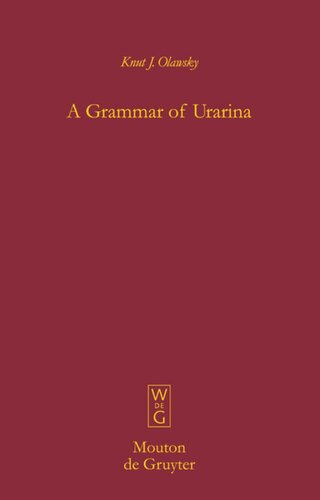

Most ebook files are in PDF format, so you can easily read them using various software such as Foxit Reader or directly on the Google Chrome browser.
Some ebook files are released by publishers in other formats such as .awz, .mobi, .epub, .fb2, etc. You may need to install specific software to read these formats on mobile/PC, such as Calibre.
Please read the tutorial at this link: https://ebookbell.com/faq
We offer FREE conversion to the popular formats you request; however, this may take some time. Therefore, right after payment, please email us, and we will try to provide the service as quickly as possible.
For some exceptional file formats or broken links (if any), please refrain from opening any disputes. Instead, email us first, and we will try to assist within a maximum of 6 hours.
EbookBell Team

4.8
24 reviewsUrarina is an endangered isolate spoken by less than 3,000 people in the rainforests of North-western Peru. This book aims at providing a comprehensive description of Urarina grammar covering all areas of the language.
From a linguistic point of view, Urarina is particularly interesting because of a range of unusual grammatical characteristics that are rarely or not at all found in other languages. One remarkable property is the constituent order OVA/VS, which was classified as "non-existing" by Greenberg (1966). However, this atypical syntactic structure is a surprisingly consistent feature of Urarina, which discerns it from the majority of languages which are assumed to follow this syntactic pattern. Another feature probably unique to Urarina is the existence of a three-way distinction for person marking on all verbs. The choice of the respective paradigm depends on a complex set of syntactic and pragmatic conditions, which are investigated in detail. Scholars whose main interest is in morphology will also be intrigued by the polysynthetic verbal morphology of Urarina, which fits well into the Amazonian context.
A Grammar of Urarina is based on the framework of basic linguistic theory, which will be accessible to scholars from a wide range of backgrounds. The straightforward presentation of linguistic structures is accompanied by in-depth discussion of the most interesting and unusual features, illustrated by examples for all grammatical phenomena and often summarised by tables or diagrams. This book fills a gap not only for studies in Amazonian languages but also from a typological perspective.